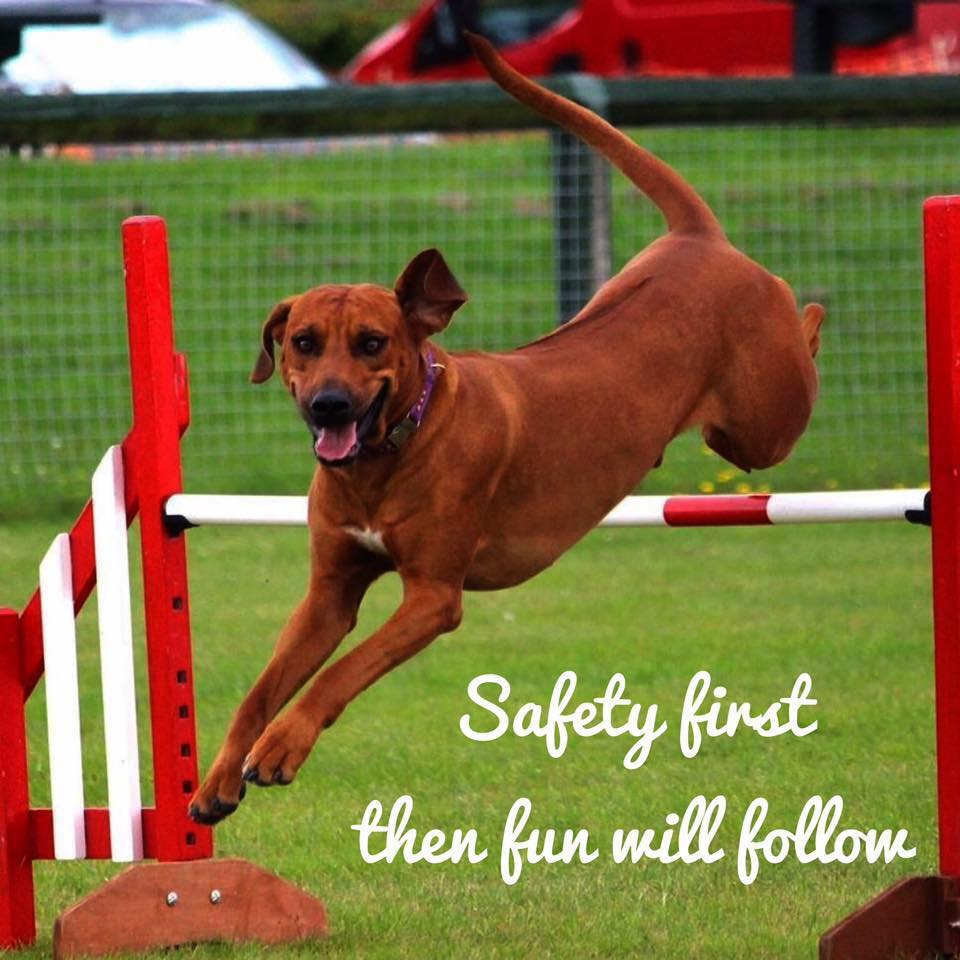What is GRACILIS MYOPATHY?
The term itself can be split into two halves – GRACILIS is a hind leg muscle in the inner thigh.
MYOPATHY just means abnormality or condition.
A Gracilis injury is also sometimes referred to as “Contracture” or “Dropped Muscle” … but these terms all refer to the same thing.
Who is most susceptible to this injury?
This injury is more usually seen in young adult dogs and often in those of 8-9 months of age.
This is seen most readily in racing dogs and competitive agility dogs.
Any dog can suffer with this injury due to the activity in which it is partaking but it is most frequently seen in:
Greyhounds
German Shepherds
Belgian Shepherds
Dobermans
Rottweilers
St Bernards
Boxers
Old English Sheepdogs
Racing Dogs
Agility Dogs
What actually is this injury?
It is thought that this injury occurs as a result of repetitive strain. It causes a tear in the belly of the muscle in the inner thigh and, while at the time there may be little evidence of this, as the weeks and months go by it may become evident with a gradual onset of lameness, weakness, pain and decreased movements. The reason for this slow degradation is that as the muscle fibres heal, the normally elastic muscle tissue is replaced by dense, connective tissue similar to scar tissue. This reduces the elasticity of the muscle resulting in shortened, restricted movement.
Signs and Symptoms of this injury
This is can be a difficult condition to identify as there are so many other problems that could cause similar symptoms including Hip Dysplasia.
On examination, you may even be able to feel a bulge in the inner aspect of the thigh that disrupts the flow of the look of the muscle, presumably giving rise to the term “dropped muscle” in the racing fraternity.
The Gracilis muscle moves the hind limb towards the body – a process called adduction. Because of the lack of elasticity, this movement will be exaggerated in and upwards towards the body, giving a shortened stride appearance.
There may be rapid elastic inward rotation of the paw
There may be inward rotation of the stifle (knee) when standing
This alteration in gait will be most noticeable on trotting and running and, should BOTH back limbs be affected, you may see the feet actually cross.
After the initial downward spiral of the condition, it with then plateau in the following weeks or months.
The gait of the dog is often very similar to a dog with HD and this can lead us down the wrong diagnostic path. Usually, X-Rays will be performed and these will come back as normal. An ultrasound examination may well be able to throw light on the injury and an MRI will then be undertaken. It will be at this point that a definitive injury to the Gracilis muscle will be detected.
Treatment
Sadly, treatment for this condition has a very poor prognosis. It is possible to try surgery in an effort to remove the injured muscle, although results of this type of treatment usually end with recurrence of the problem within 6 weeks to 5 months of surgery.
If the problem is identified early, then intermittent ice and rest can be tried, to minimise permanent damage.
Massage therapy can certainly be an option as this may reduce further damage and assist in re-modelling of the tissues.
WARM UP THOROUGHLY BEFORE ANY ACTIVITY
Activities which cause repetitive strain are certainly to be avoided such as ball launchers, Frisbee, running on wet grass or activities causing explosive starting, stopping or twisting movements.
Joint aids and supplements may help with mobility and reduction of further diminished movements.

